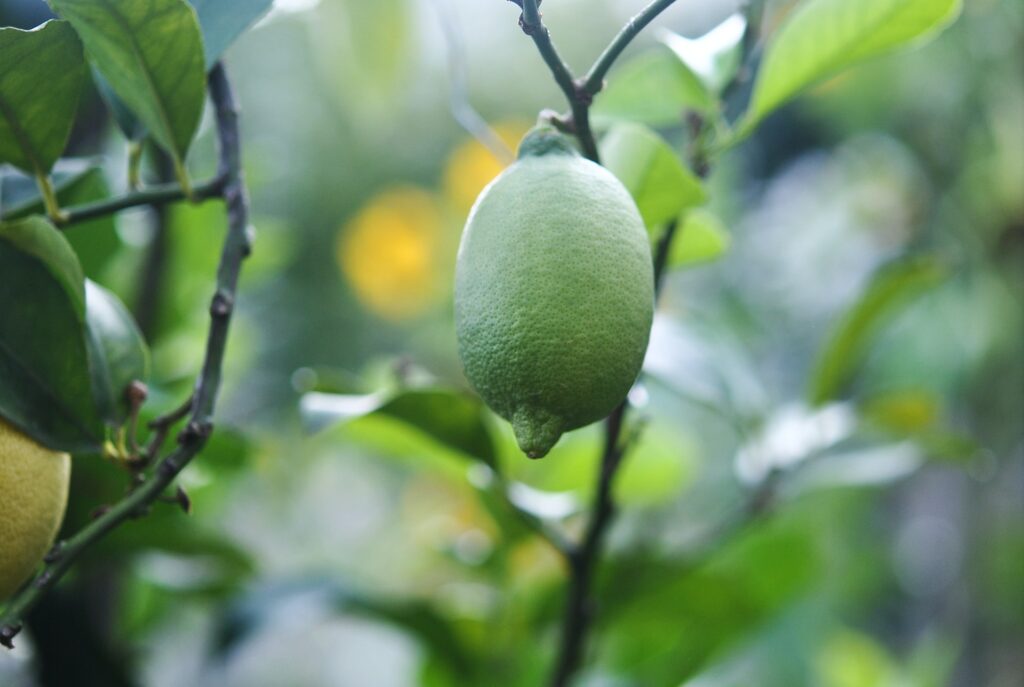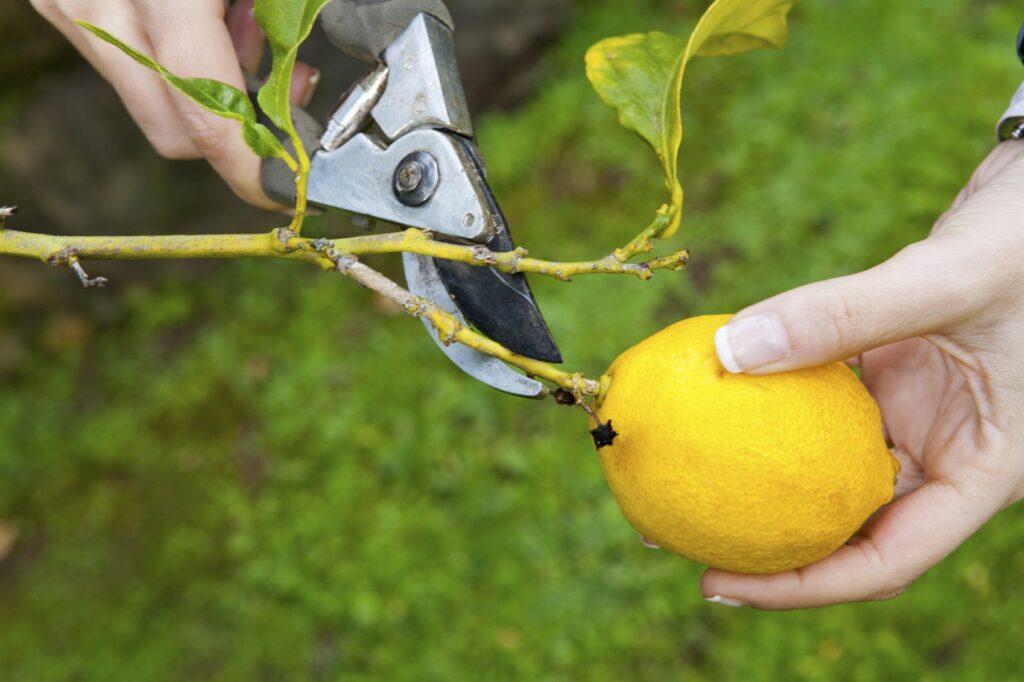Lemons are one of the most beloved citruses in the world. Most of us love a nice, refreshing glass of lemonade, especially on a warm, summer day. However, contrary to the popular saying, life doesn’t just give you lemons – they grow on trees.
Now, even though many consider lemons to be a tropical tree, they can grow in pretty much any climate, as long as there are enough summer days and sunlight. However, to keep the tree at its best and enjoy a nice crop of lemons every year, the tree needs to be trimmed or pruned from time to time. If left untreated, the tree will become overgrown and end up looking more like a bush than a tree.
Today, we’re going to focus on pruning the lemon tree and learning when and how to properly prune one to ensure the best crop and overall health.
What’s The Ideal Lemon Tree Size?

Source: unsplash.com
In general, when we’re talking about the best state a lemon tree can be in, meaning it being at its healthiest and offering the best crop, is when the tree’s canopy is not larger than 2 to 3 meters. Contrary to popular belief, a larger canopy does not mean more fruit. Quite the opposite, in fact. A large canopy only takes up space and grows foliage, instead of fruit.
The determining factor when it comes to fruit growth are the tip ends and when the canopy is overgrown, those aren’t able to properly develop and provide us with the gorgeous yellow citrus we all love so much. So, we’d say that you should strive to keep a lemon tree under 3 meters in size (excluding the tree trunk). How do you do that? By pruning.
Why Should You Prune A Lemon Tree?
The general idea behind pruning is that applying ‘controlled stress’ to the plant encourages new growth and pushes the tree in the right direction. In time, a tree will take on a proper shape with few main, fully developed branches and controlled foliage. This is especially important in the first few years as the tree is forming. Later on, the tiny growths that you prune in the early stages become pretty much non-existent, so it’s important to start early to help the tree develop in the best way possible.
When Is The Best Time To Prune?

Source: pexels.com
As we’ve said, it’s best to start early. Frist few years are crucial in the development process – the first two to be precise. Now, another thing to consider is the time of year when you should do it. Now, this one depends based on the climate, but in general, it’s advised that you prune your tree in the spring or autumn. Avoid doing the pruning in the winter or summer, as extreme temperatures, no matter low or high, can stump the plant’s growth.
As far as how often you should do it – that depends on the age of the tree. Young trees should be pruned as often as needed, so they develop in the proper way. Once they get older, you can dial that down to about once or twice a year, after the harvest. Now, if you want some additional information on precisely when to prune a lemon tree, you can click here to find out.
Are There Different Types Of Lemon Trees?

Source: pexels.com
Yes, of course, they are. Many ask this question because they feel like they might not have to prune or trim theirs if it’s a different type of lemon tree or perhaps a hybrid. However, even if you end up with a hybrid like a Meyer lemon for instance, which is a hybrid between a lemon and a mandarin orange – you’ll still have to prune.
Now, let’s move on to pruning.
What Tools Will I Need?
To properly prune a lemon tree, you’ll need to gear up. Since safety always comes first, you’ll need a pair of protective gloves. You may or may not use goggles, but we don’t see the need to use them, but, to each their own. On top of that, you’ll need either a pair of pruning shears or a small, hand-sized saw, as you’ll have to cut through some wood. Other than that, arm yourself with good will and get to work.
How To Prune A Lemon Tree?
Let’s go through the process, step-by-step, so by the time you’re done with reading this article, you’ll know how to properly do this.
-
Plan It Out
Don’t just go in and randomly start cutting stray branches. Take your time to really examine the tree and determine the best course of action. Once you’re sure which braches are good to go, then you can pick up the gloves and shears and get to work.

Source: garden.eco
-
Start Pruning
The first step would be to remove the deadwood from the branches. After that, you’ll move on removing the tiny, thin branches to allow the main ones to grow faster and stronger. Keep in mind that all of the cuts should be at a 45-degree angle so that you don’t damage the main stalk.
Also, pay attention to the base of the trunk. If you notice some spouts and basal shoots, remove them as well, as they’ll only suck out the necessary nutrients from the tree itself.
-
Skirting
Skirting basically means getting rid of the growth at the bottom of the canopy to prioritise the growth on top, since that’s the best place for the fruit to be at. It might seem like a wrong thing to do, but you’re basically making sure that the most nutrients end up where they’re supposed to, so, in a way, it’s quite the opposite of wasteful.

Source: gardeningknowhow.com
-
Topping
Topping is pretty much the same thing as trimming. You’re not getting rid of anything for any particular reason other than a purely aesthetic one. However, don’t overdo it. You can even skip this step if you wish, but keep in mind a little bit of trimming never hurt anybody.
-
Know When To Stop
Our final advice would be to know when to stop. In general, you should never remove more than one-third of a canopy, as the trauma may to too great for the tree and you might end up killing it instead of boosting its growth. So, keep that in mind once you start pruning.
Without a doubt, growing lemons requires some extra effort. However, the end results are more than pleasing. That first sip of lemonade or that first squeeze of lemon juice over the platter full of seafood will taste so much better when you know it came straight from your garden.







